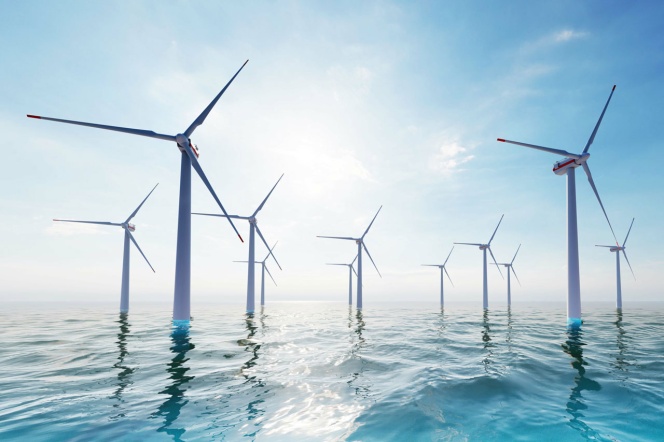Date added: 2024-08-09
Digital Twin – secure and more reliable wind power

The new EU project “Federated Digital Twins for Offshore Wind Energy Production and Market Demand (DTWO)”[1], coordinated by the Technical University of Denmark and realized by partners from 9 countries, is to develop a digital twin for offshore wind energy generation systems. Aimed at providing a more reliable and secure wind power, the digital twin integrates the already existing models, simulations and data in real time. Although other commercial initiatives for developing digital twins for wind farms already existed, this particular project is the first to introduce a customizable platform that ensures confidentiality of the users’ sensitive data.
“Digital-twin technology involves creating a virtual replica of a physical object, person, or process. In this context, it pertains to offshore wind farms, enabling the simulation of real-world conditions to support science-based decision-making and minimize uncertainties. By using a digital model of entire wind farms, operators can better predict and deal with various scenarios such as approaching extreme weather events”, says prof. Bogdan Wiszniewski], Faculty of Electronics, Telecommunications and Informatics, head of the research team at Gdańsk Tech.
The research team combines experts from three faculties, not only Electronics, Telecommunications and Informatics, but also Mechanical Engineering and Ship Technology, as well as Applied Physics and Mathematics.
–We will focus on using advanced machine-learning methods to automatically estimate the uncertainty of predicting the occurrence of faults in a wind turbine by employing data from various sources. The developed solution will be implemented as a module integrated with the first of its kind customizable platform of the federated digital twin for offshore wind energy production developed in the project – announced prof. Bogdan Wiszniewski.
International Cooperation

The project is expected to be completed in three years, combining the strengths of world’s largest offshore wind turbines maker, Siemens Energy (in this case, its Siemens Gamesa division), and Orsted the biggest offshore wind project developer in the world, as well as research centres – Fraunhofer Institute for Wind Energy Systems, DHI and Technology and the von Karman Institute for Fluid Dynamics (VKI), consultants developing software (Softserve Poland Ltd.), the academia (Technical University of Denmark and Gdańsk University of Technology), institution for science communication (ICONS Foundation), energy forecasting company (ENFOR), the European Centre for Medium-Range Weather Forecasts (ECMWF) and the Royal Netherlands Meteorological Institute (KNMI).
On the inaugural meeting, the project coordinator Xiaoli Larsén said that, facing rapid and vast development in offshore wind energy, along with gaps in key scientific and technological components between the past and the present, the DTWO project aims at enhancing the digital twin methodology to bridge these gaps and pave the way for the future global development.
On the inaugural meeting, the project coordinator Xiaoli Larsén said that, facing rapid and vast development in offshore wind energy, along with gaps in key scientific and technological components between the past and the present, the DTWO project aims at enhancing the digital twin methodology to bridge these gaps and pave the way for the future global development.
The Five Modules
The DTWO project will include the creation of a software architecture that integrates the following five modules: weather, inter- and intra-farm wakes, resource and turbulence, turbine health state and reliability predictions, as well as grid interconnectivities and energy systems. The modular Twin incorporates software architecture with data centers and user-friendly tools.
Finally, Xiaoli Larsén explained that the DTWO project allows for a coordinated assessment of energy yield, wind turbine performance and a sector-coupled energy market suitable for a large pan-European system.

